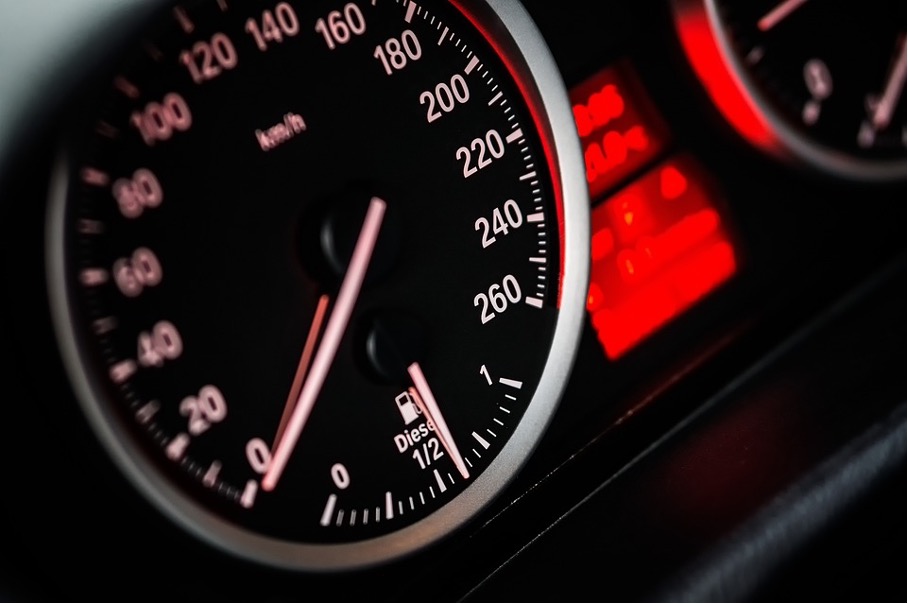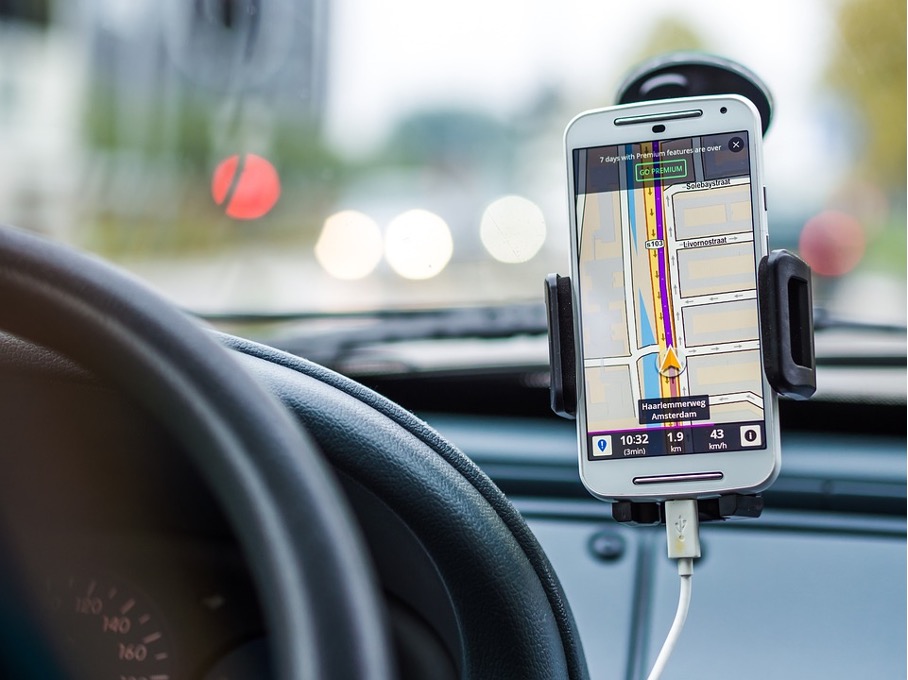Measurement of speed
Reading the title we might think that we are dealing with an extremely simple topic. In reality, however, car manufacturers have to use a lot of tricks in order to inform the driver about the current speed in an appropriate way.
In this article, we present how speed measurement works, what problems developers encounter, and how we can “mess up” the instrument ourselves.
What are we actually measuring?
It might seem strange at first, but vehicles are not able to measure their speed directly. We currently do not have the knowledge to be able to provide them this capability.
In fact, the speed is achieved through calculations on the dashboard. The speed of the wheel or some other rotating part (for example in a gearbox) is measured. If we know how big the wheel is, then we know its circumference, so how many meters it travels with one revolution of the wheel, we also know how much time it takes, so the speed can be calculated based on the above data.
Problem with the tyres
It seems simple, but this calculation has real pitfalls.
With the above method, for example, the speed of trains can be determined quite precisely, because the diameter of the steel wheels can be considered constant with a very good approximation. The rubber wheel – on the other hand – is completely different.
Whatever mixture of natural or synthetic materials the tyre is made of, its ability to deform cannot be compared to that of railway wheels. If the load on the vehicle increases (more passengers, more cargo), the side wall bulges out more, it flattens and its diameter already changes on the part where it comes into contact with the road.
In addition, the tyre also transmits the traction force, which causes further deformation in it, and there are also factors that change the diameter as a result of acceleration/deceleration and dynamic overloading.
The other inaccuracy factor comes from tyre creep, so compared to the road surface tyre can accelerate a bit under certain conditions: for example, at maximum acceleration, on asphalt it can be up to 10 percent, on gravel, loose ground even more. There is no speedometer that can calculate this, since the speedometer takes the physical signal from the output shaft of the gearbox in the majority of cases. It follows from this that the creep of the wheel, the static and dynamic change of the rolling radius of the wheel is included in the signal.
How can we be punished based on this?
Here comes the question: if the speed measurement is so uncertain, on what basis can we be penalized for exceeding it?
Building regulations and the police combine to try to prevent this. In the case of the former, it is a general directive that the speedometer can never show less than the real speed, only more.
This can be explained relatively simply, the driver can never believe that he is driving at, let’s say, fifty, while his real speed is more like sixty. There are practical reasons for this, such as not having anything to refer to the police when the check arrives, as this can provide a basis for a claim for compensation to the manufacturer.

Source: www.pixabay.com
On the other hand, the speed radars do not penalize for exceeding 1 km/h either, even the on-the-spot penalty comes only after an 8-10% exceed.
The regulations therefore stipulate firstly that the system can never make a mistake by going down, but they also define an upper limit: above 50 km/h, the displayed speed cannot deviate from the value of speed+10 percent+4 km/h, so at 100 km/h, for example, this can be 100+10+4, i.e. 114 km/h.
As a result, manufacturers cannot abuse the clock in such a way that it shows the driver much more than the real speed, to show that the car has a significantly higher performance than the real performance.
Why don’t we use GPS?
It is also a fair question that most of today’s cars already have some kind of satellite positioning system, and new ones are installed with it even if the customer has not ordered navigation, since the mandatory emergency call system sends the GPS coordinates to the emergency call center directly.
There is no exact answer why we don’t use it.
At the same time, we can say that GPS can often have unpleasant moments. There is no grace period for the speedometer, we don’t have that few seconds until the GPS signal returns to the coverage zone when we leave the underground garage.

Source: www. pixabay.com
Calculating the speed is also a computationally demanding task, so a cheap device is ideal only for showing the maximum constant speed, a delay of several seconds is not allowed here, which can often be a problem impossible to solve during intensive accelerations/decelerations. In addition, the speedometer must work in tunnels, underground garages, between tall buildings, where the GPS is either wrong or simply loses satellites.
The user
Not surprisingly, improper use is the most dangerous factor in this matter as well. Due to intentional or accidental errors of the user, he/she will be able to immediately violate all previous directives with the vehicle.
The simplest, but almost disappearing phenomenon is the parallax error. In other words, the pointer and the scale are mostly not in the same plane, so we only see an exact value if we look at the display perpendicularly.
This is only in the rarest between the cases, but this also adds an inaccuracy to the speed measurement.
With the spread of digital displays, this error practically ceases to exist, since the pointer and scale will always be in the same plane. In many cases, in order to achieve a spatial effect, the parallax error is introduced with the help of software.
We also make a mistake if we don’t take care of the tyre wear. This is not primarily important for determining the speed, but it is a fact that a diameter reduction of 5-7 mm can already be detected on the dashboard.
The sin above all of the mentioned ones is not following the manufacturer’s recommendations.
This includes, for example, improper tyre pressure and the use of tyres of the wrong diameter.
With an over-inflated tyre and with a significantly increased wheel diameter, it can happen that we see a lower speed on the dashboard than we are actually traveling at, which carries many safety and legal risks.
Summary
It can be seen that it is worth following the manufacturer’s instructions and it is also recommended to check the tyre pressure frequently. By following these guidelines, no matter how difficult is to determine the exact speed, with correctly functioning instrument, we cannot get such a false value, which could lead to bad decisions behind the wheel.













